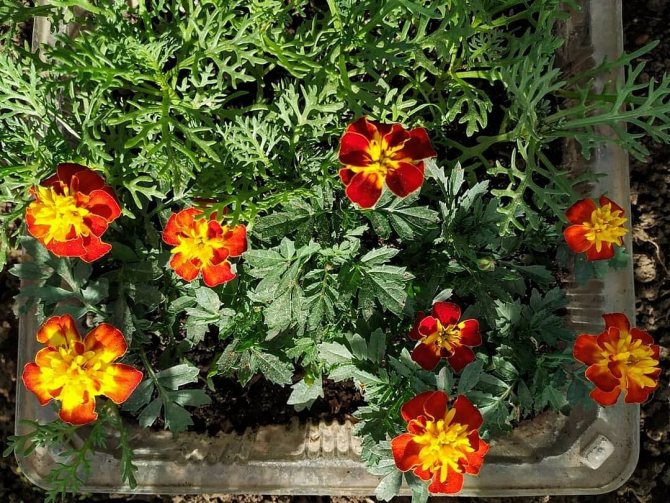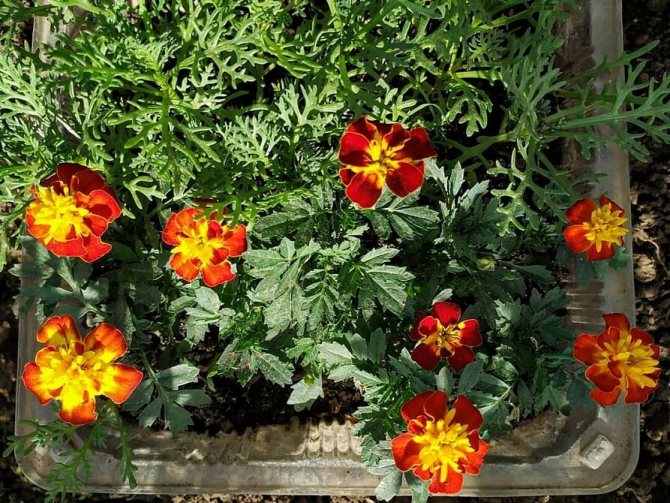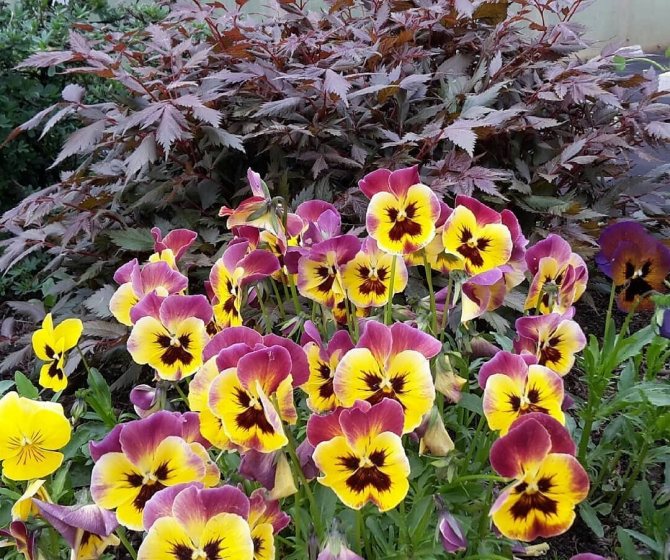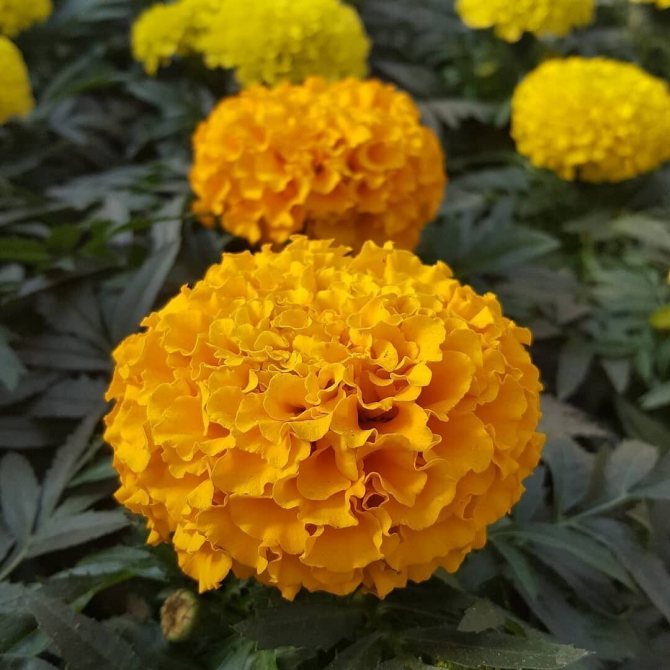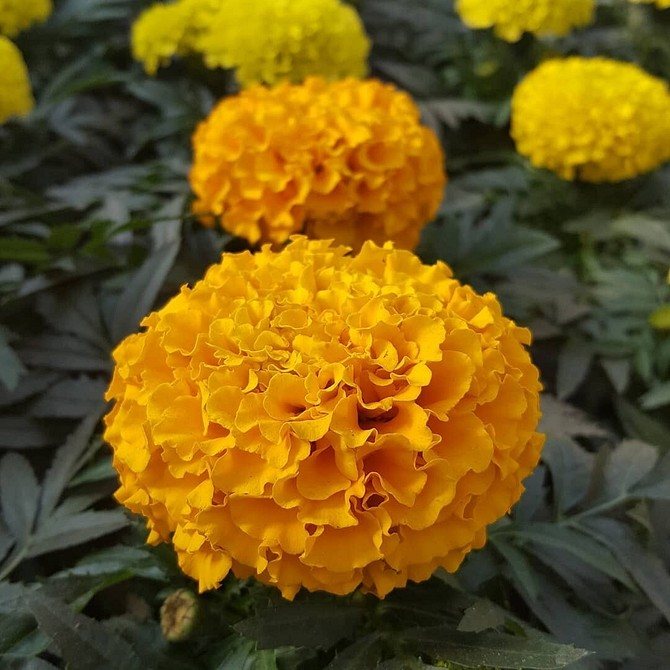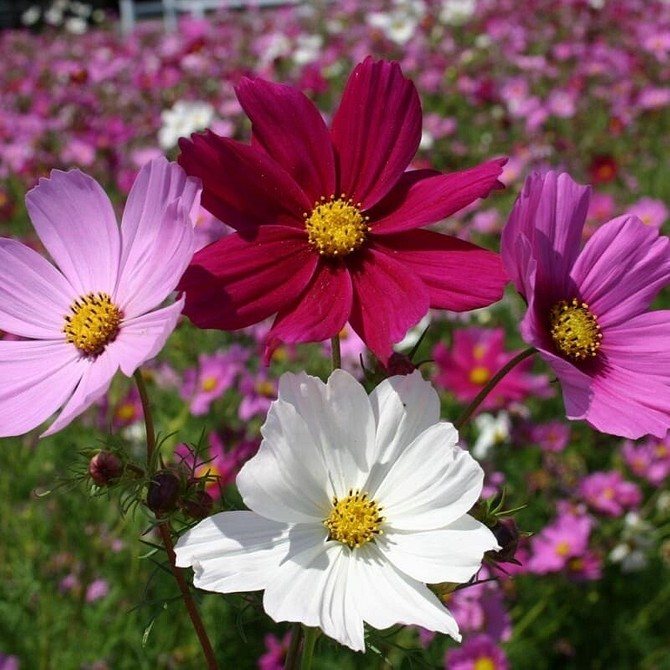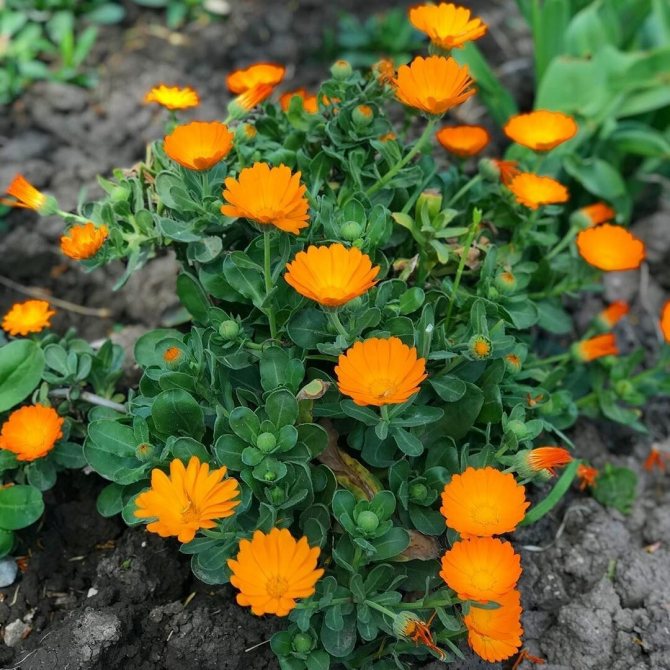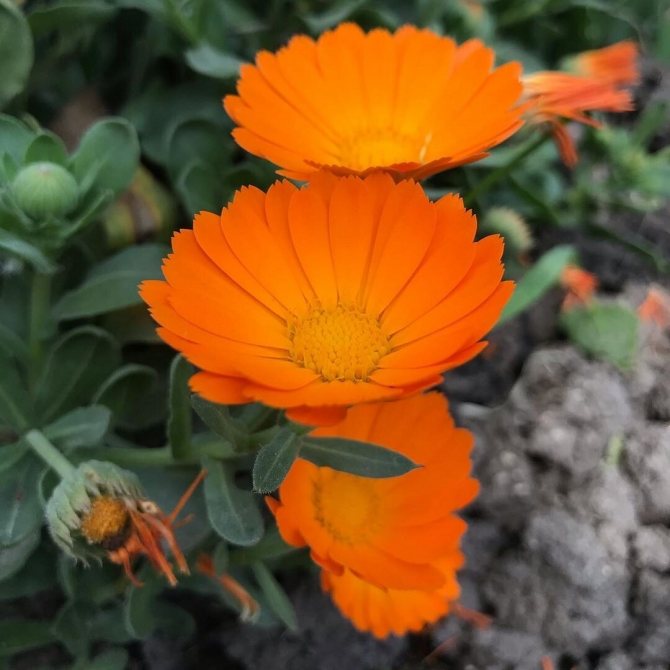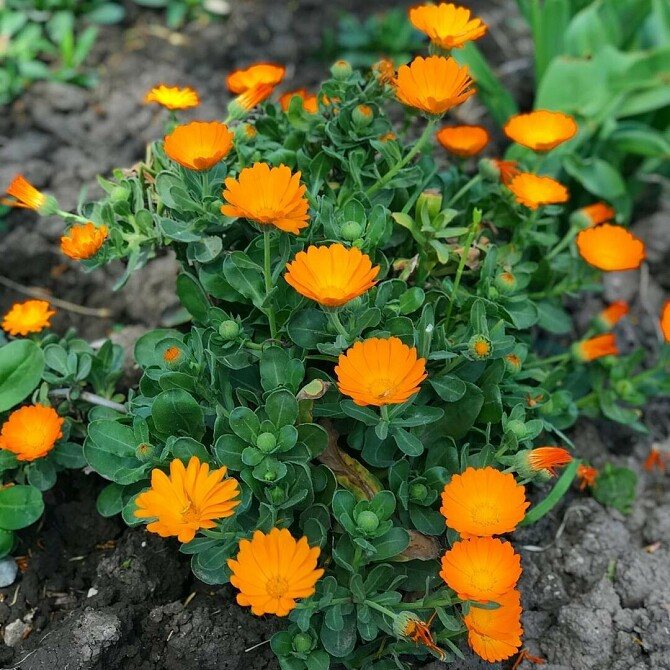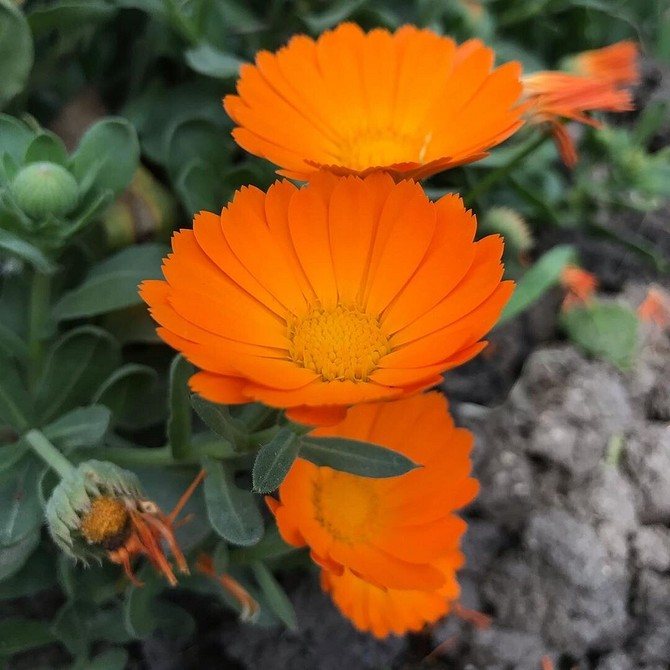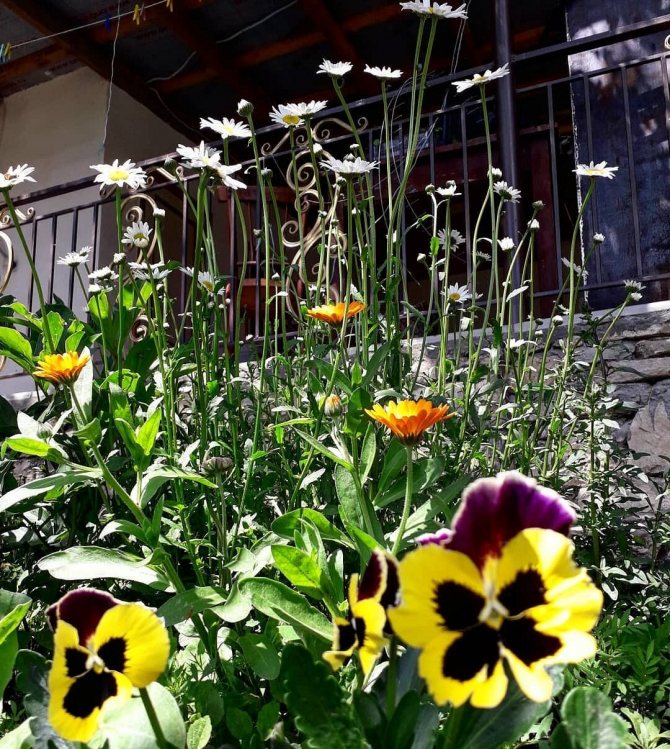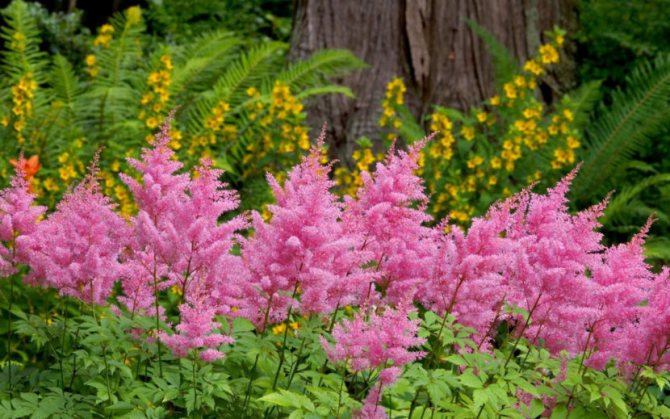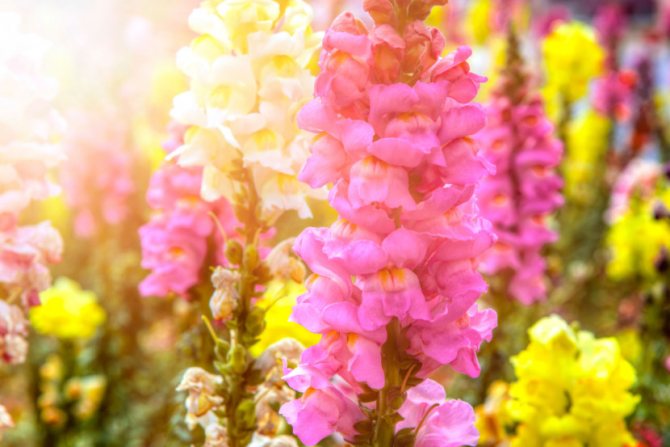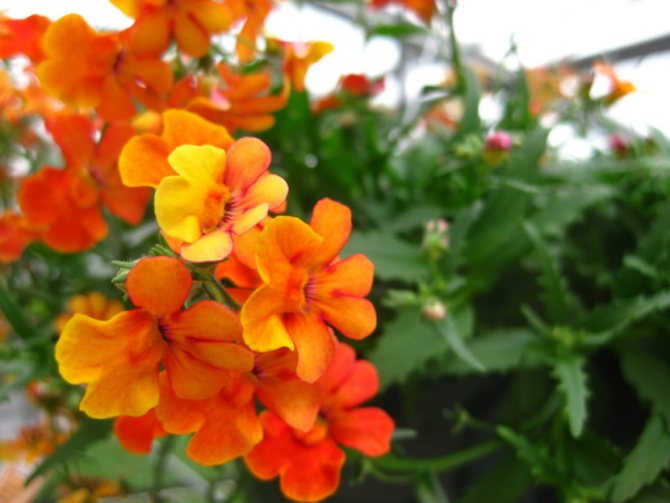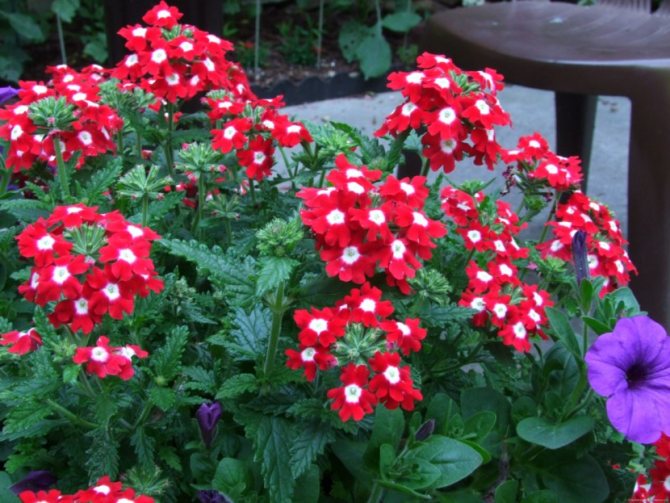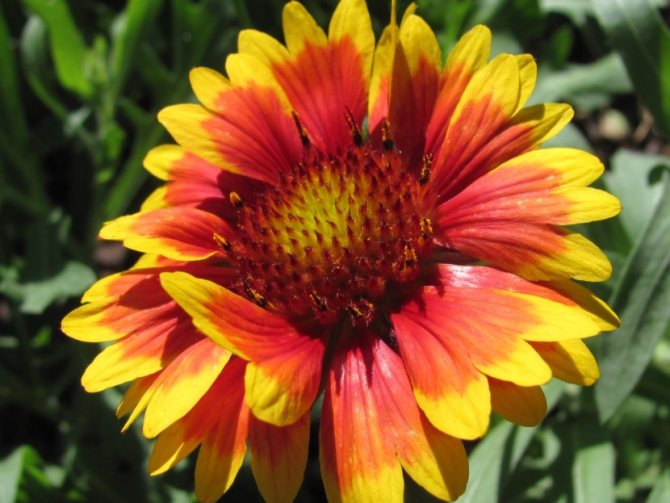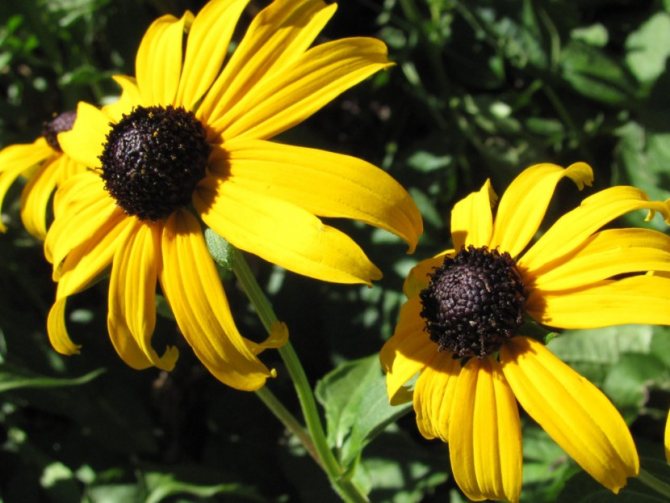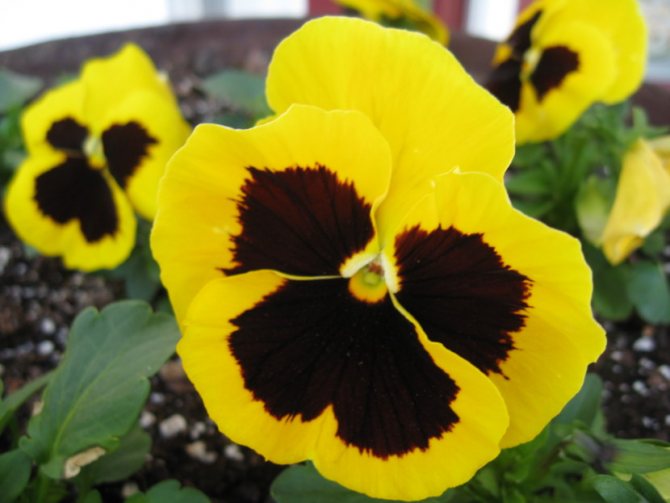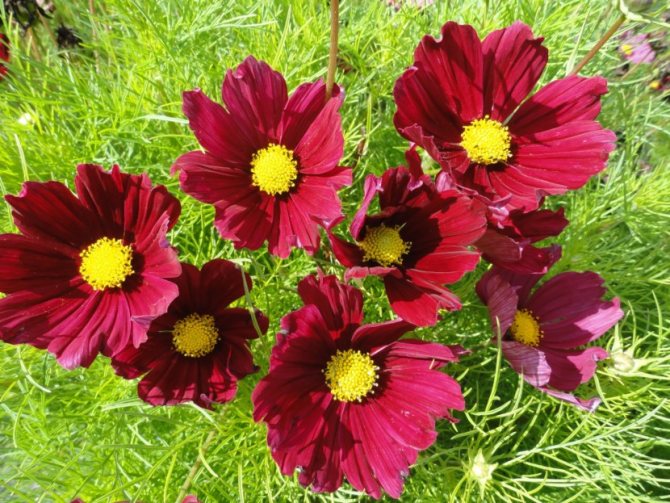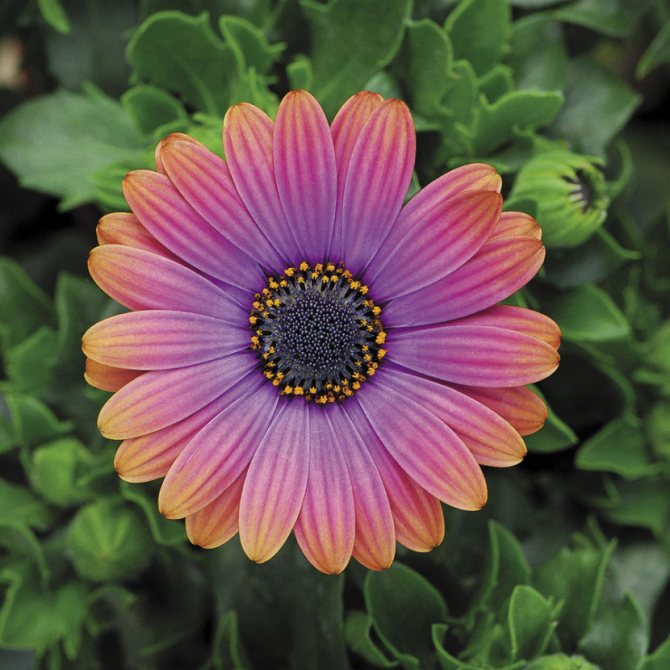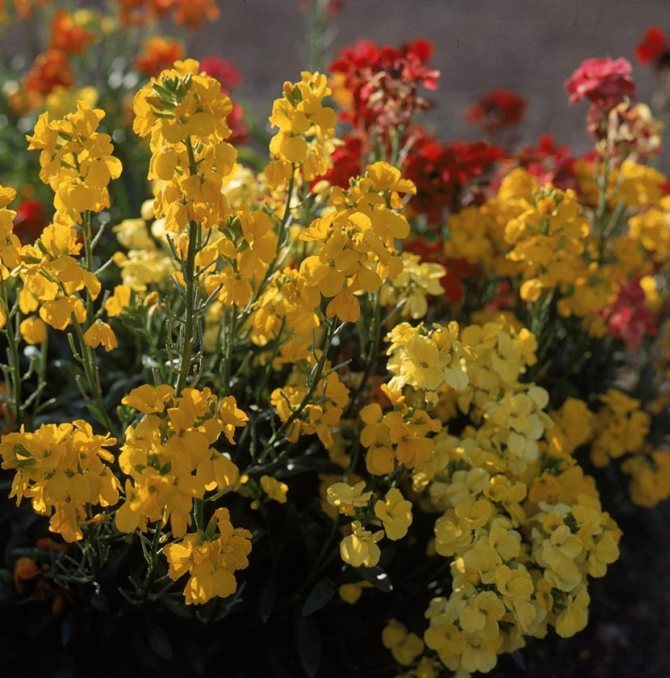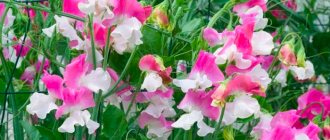Unpretentious perennial and annual (there is also information on Anagallis here) flowers blooming all summer save the time of the owner (or mistress) and help to create a wonderful garden on their land without much hassle, in which, at the same time, there will always be a place for peonies, and asters (varieties to choose from), and others, more sensitive to the attention of the grower. Spectacular perennials are taken as the basis for summer cottage compositions on flower beds and other structures, and every year they are supplemented with annuals that bloom for a very long time - almost all summer.
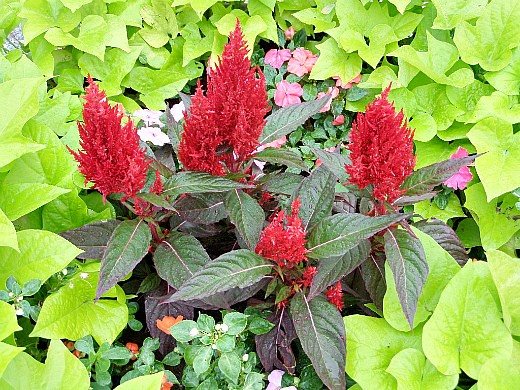
Advantages and disadvantages
A rare perennial bloom in the first year of planting, and annuals will decorate the garden very quickly. Summer plants bloom throughout the season, are indispensable in the creation of carpet beds, where line accuracy is important. Perennial flowers, growing, will disrupt the outlines of such flower beds, and annuals will retain clear compositional planning.
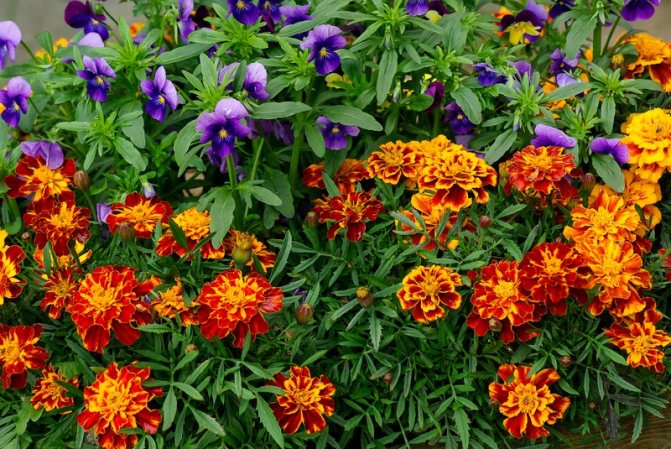

With the help of annuals, you can easily update the landscape design of the garden, because they only grow for one year. For those gardeners who like to transform their site every year, to break new flower beds, planting annual plants will be a good help.
Of the shortcomings, first of all, one can single out the fact that certain species of annuals are grown by seedlings, and this is additional concern for maintaining the necessary conditions (light and humidity).
Short description
Annuals are a type of plant that is obtained by planting a seed in the ground in early spring, and the plant dies with the arrival of cold weather or after completing its mission. Over the summer, it manages to grow, bloom, bear fruit and then wither. There are both decorative types and garden options. Among them there are herbs, flowers and even shrubs or pseudo-shrubs.
Some produce seeds once a season, while others bear fruit several times. Weeds are more common in the second group. They bloom, then the seeds ripen, which scatter to the sides and germinate again, and so on in a circle until late autumn. Gardeners try to get rid of them, in contrast to fruiting or decorative ones, which are carefully grown.
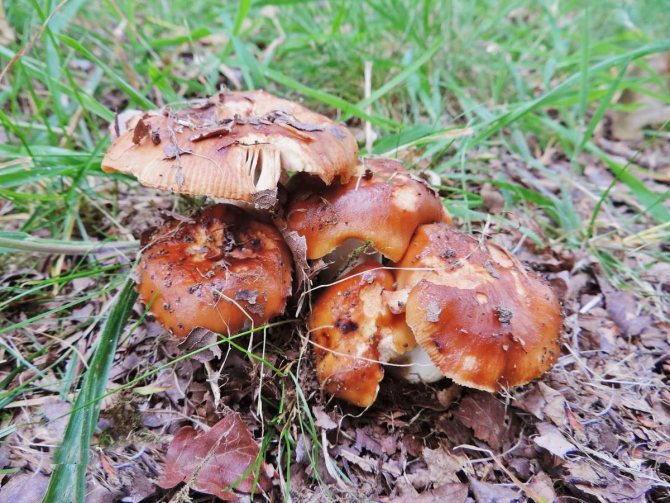

But more often than not, an annual plant is not whimsical, therefore it does not bring much trouble.
Annual plant species
Annuals are flowers with one growing season and are especially popular with gardeners. The choice of varieties is huge, but most often the earliest and cold-resistant species are planted in flower beds, which can be grown even in regions with unstable weather conditions.
The most popular types of annual crops:
- Marigold. Fast growing, unpretentious flower. Loves warmth, easily tolerates drought. It blooms well and profusely in some shade. Double flowers of yellow, orange, red-brown shades look very attractive. It is grown both by seedlings and by sowing in the ground. Any varieties bloom for a long time in the garden, on terraces, balconies.
- Kosmeya. An unpretentious plant takes its rightful place in modern landscape design. The tall stalks of the cosmos are shrouded in delicate foliage that resembles thin needles. The flowers are pale pink, lilac, burgundy, purple. The kosmeya blooms all summer, in an adult state it is a branched bush that goes well with other types of plants in the flower bed.
- Snapdragon. This annual flower is experiencing a rebirth. Modern varieties resemble large gladioli, peduncles can reach 50 cm. Flowers of various shades, from white to dark purple, are collected in large spike-shaped inflorescences. Light-loving and cold-resistant plant, tolerates frosts down to -3 ° C. Most often grown by seedlings. Snapdragon not only decorates flower beds, but is also used for cutting. In bouquets and compositions, it retains decorativeness for a long time.
- Nasturtium. A perennial plant of the southern climate, we grow it as an annual. Heat-loving culture, does not tolerate frost, drought. There are bush and creeping forms. Beautiful flowers of various shades with a waxy coating and a pleasant aroma. Grown by sowing seeds in the ground. Blooms profusely until frost.
- Petunia. A very beautiful and unpretentious plant, popular with gardeners. Blooms profusely from July to October. The flowers are funnel-shaped, monochromatic and variegated. Petunia loves moist soil, heavy soil with the addition of humus, which dries out more slowly, is also suitable for her. It blooms for a long time and profusely until the coldest days. Can be planted in flower beds or in outdoor pots. For the winter, you can transplant it into a flower pot and bring it indoors.
- Zinnia. Tall, erect annual plant. The flowers are large, single-petaled, shades from purple to purple. It grows quickly, but stretches out with a lack of light. The stems become thinner and may fall to the ground. It winters well only in the southern regions, and in the middle zone of the country it can freeze out.
To create a dense vegetative carpet on the site, varieties with openwork, dense foliage and large, bright flowers are suitable. Light-loving annual flowers appear in all their glory only in a moist, well-lit area.
Beautiful flowering low-growing annuals
Low-growing plants, the height of which does not exceed 30 cm, always look extraordinarily elegant against the background of taller "brothers". They are often planted as ground covers, which successfully fill in the "gaps" between trimmed ornamental shrubs and rose bushes.
You can learn more about how to choose ornamental shrubs for arranging a garden from the material:


The lowest unpretentious annuals blooming all summer long are Iberis, which forms snow-white "clouds" of inflorescences, pale blue nemophila, night violet with its unique aroma and unusually graceful dwarf viola
Lush ageratum "pillows" will become a bright decoration of a rockery or rock garden. A low-growing plant forms dense flowering rugs of various shades, starting with pale white, and ending with blue and even rich lilac.
Like sunbeams, sparkling with golden tints, from the first days of summer until late autumn, compact marigold bushes with miniature flowers decorate the site.
Recent Entries
6 rare tomato varieties of 2020 that will bring you a decent harvest 5 cucumber hybrids that I will plant this year without hesitation 8 budget tips for summer cottages that will save money and time
Planting marigolds on seedlings allows you to create beautiful compositions in the garden at the beginning of summer, read about this:


Cute tiny daisy heads framed by soft green foliage or dwarf snapdragon flowers decorate the borders along the garden path
Among the low flowering and at the same time picky annuals, compact varieties of silvery cellosia, phlox, wild rose, forget-me-not, lobelia can be distinguished.
Planting and growing
There are two ways to grow annual flowers. The first is from seeds. Seedlings are received in advance and young shoots are planted in the ground in the spring. The method is reliable, the flowers have time to get stronger by the spring. In this way, you can grow begonia, marigolds, pelargonium, petunias, snapdragons, dahlias.
Recommendations for growing seedlings:
- In March, seeds are sown in a greenhouse or special boxes in an apartment.
- It is necessary to make a drainage layer at the bottom of the container.
- Prepare a breeding ground.
- Seeds can be soaked in a nutritive growth promoter or water before planting.
- Small seeds are scattered over the surface without sprinkling with earth. Large ones can be slightly deepened. If the seeds are buried too deep, they will germinate for a long time.
- To create a greenhouse effect, it is better to cover the boxes with plastic.
- The soil is constantly moistened from the sprayer.
- Grown plants dive.
- Before planting in the ground, the seedlings are taken outside during the day so that they are hardened.
- When the weather is warm, you can transfer young plants to the flower bed.
The second method - the collected or purchased seeds are sown in the spring immediately into the open ground. This method can be used to plant calendula, amaranth, decorative peas, nasturtium.
The seeds are pre-soaked and sown in a prepared nutrient soil in a flower bed or in a flower garden. It is important to constantly water the ground.... If the shoots are too frequent, you can plant young plants or simply thin them out, leaving the strongest shoots.
Many annuals can be grown from both seedlings and seeds. Some plants have a short flowering period, so that the flower bed looks beautiful all season, you can add new seeds every month, remove faded plants and plant new ones.
Output
Annuals in the flowerbed will add charm to your plot. These flowers have a bright and varied color, many of them have a pleasant aroma. Unpretentious plants germinate easily, you can sow seeds without seedlings directly into the ground, they will develop quickly, and in June you will enjoy a colorful meadow near the house. With good watering and feeding, a bright flower bed will delight you all summer.
If it seems to you that the flower garden is not designed well, do not worry, that is why annuals are good, that next summer you can purchase other seeds and create a completely new composition. By combining plants that open and close at different times, you can observe a different picture in the same area during the day.
You can sow seeds of edible plants in a flower bed, many of them are no less beautiful than specially bred flowers. Sunflowers, beans will first decorate the site, then they will be eaten. Calendula and chamomile have medicinal properties. Colorful flower beds will attract pollinating bees to your garden. Give room to imagination, plant every empty piece of land with annuals, and your summer cottage will turn into a piece of paradise.
Care advice
In dry weather, timely watering is important, but water should not fall on the buds. Watering is best done in the evening or in the morning. It is necessary to loosen the soil in a timely manner, remove weeds, remove wilted flowers, otherwise the flower bed will look untidy. Plants are fed 3-5 times a season. The soil is mulchedthis will help retain moisture at the roots and inhibit weed growth.
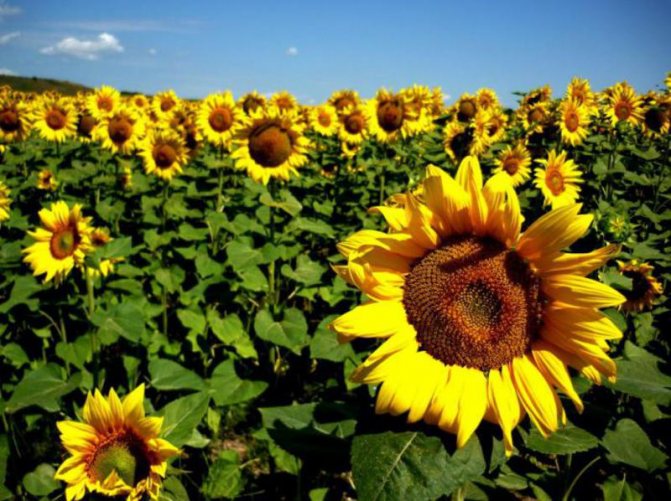

Annual ornamental plants will help create an excellent living garden, fill it with rich colors, and fit perfectly into many styles of landscape design.
Bacopa
Bacopa or Sutera works well in container arrangements and hanging baskets thanks to the flowering flowering stems. Bacopa has small, pale flowers. Most often, it is used in the company of bright summer people, whom it favorably sets off with its delicate, discreet charm. In addition, Bacopa is valuable because it has a long flowering period: from early spring to the onset of the first severe frosts.
Vegetative bacopa (grown only from cuttings) comes in a rich variety of forms, including double and large-flowered. There are not many hybrids that can be grown from seeds: Bacopa "Snowtopia" (Snowtopia) with pure white flowers and "Blutopia" (Bluetopia), which has lavender flowers. In 2020, a new variety of bacopa became available for seed reproduction. "Pinktopia" with relatively large bright pink-crimson flowers.


Bacopa <>
Features of growing seedlings of Bacopa
For best results, sow bacopa seeds on seedlings about 12 weeks before the last most likely overnight frost. Sometimes it is recommended to cover the seeds with a small layer of soil about twice the size of the seed. But since bacopa seeds are small in size, it is best to just press them a little with a toothpick into the substrate.
Place the containers in a plastic bag to maintain the moisture needed during the germination process. Average time of emergence of shoots 5-10 days after sowing. Remove the plastic bag as soon as the seeds sprout.
Maintain a moderate moisture content until the first true leaves appear on the bacopa. During this period, seedlings are especially vulnerable and can die if the soil is overdried. It usually takes two to three weeks from sowing to picking. As a rule, seedlings are unpretentious at seedling age and do not even require additional formation.
Bacopa develops well in the sun, and practically does not bloom in the shade. The plant needs regular watering, since the flower does not tolerate the drying out of an earthen coma.

